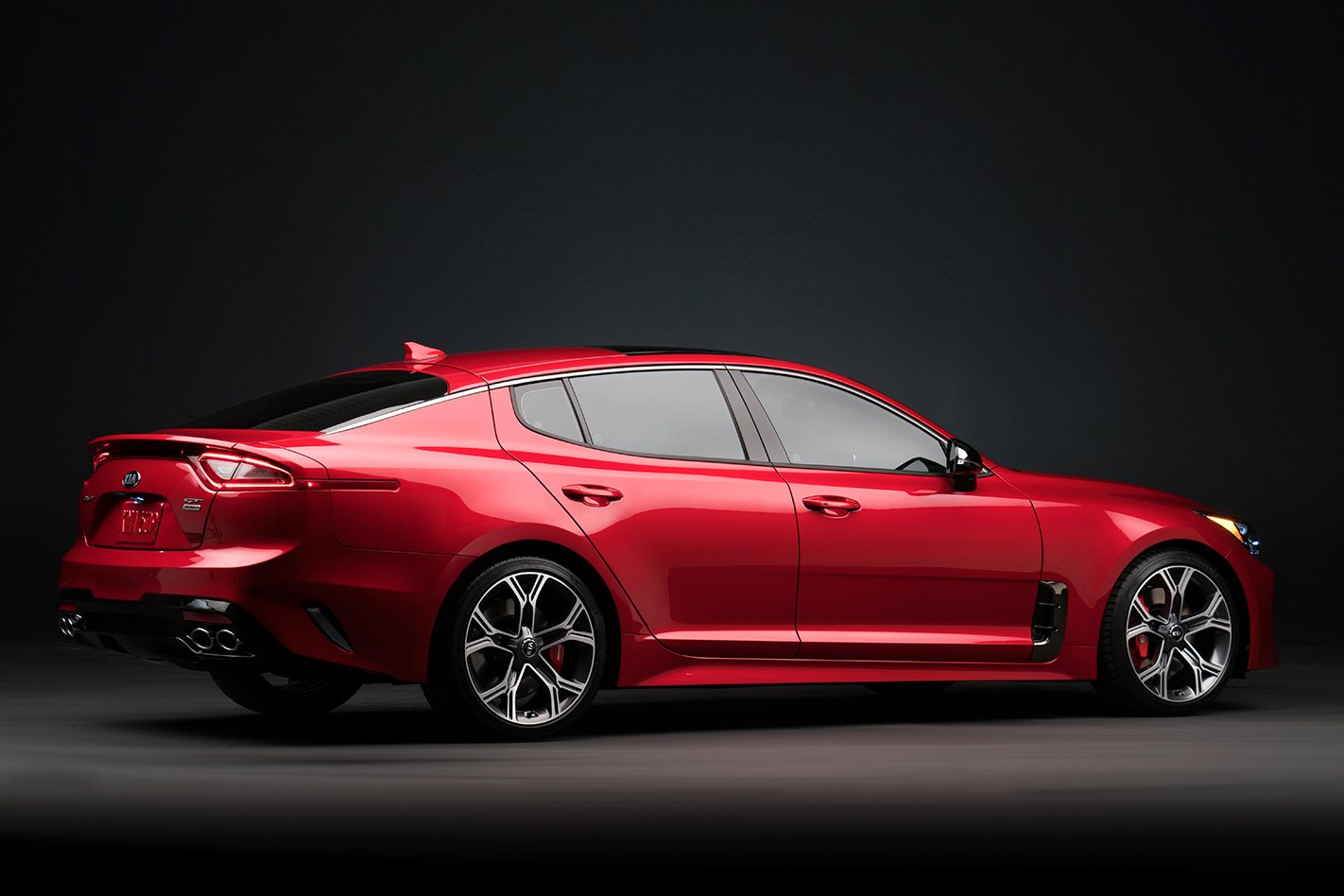We’re excited about the new Kia. Just let that sink in for a moment. We’re. Excited. About. A. Kia.
Now ordinarily, the Korean maker of automotive’s sensible shoes would be as likely to grace these hallowed performance pages as a ride-on lawnmower. But then, this really isn’t an ordinary Kia.
Flashback to an icy January at the Detroit auto show and the excitement coming off Kia’s new performance boss in great shimmering waves is genuine. “For the Kia brand, the Stinger is like a special event,” he says. “Because nobody expects it. Not just the way it looks, but also the way it drives. It’s a whole different animal.”
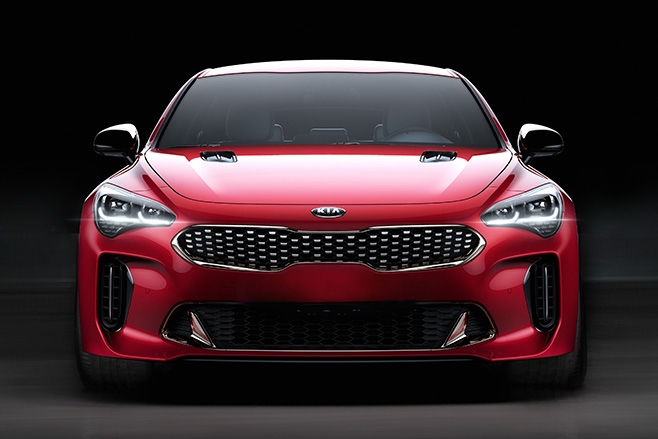
Biermann’s sizeable brief spans both Hyundai and Kia, and will include the soon-to-be-released Hyundai Genesis G70 and the same brand’s much-hyped N range of performance vehicles. That the letter N will follow M in Biermann’s alphabet soup is surely more than a coincidence.
But first, the Kia Stinger. It’ll be Biermann’s first finished project to hit Australian shores when it touches down later this year, and it will arrive with the hopes of the company resting squarely on its muscular metal shoulders. It’s a high-stakes game. If this one stinks, excitement for the other new models – including those from Hyundai – will splutter and die along with it.
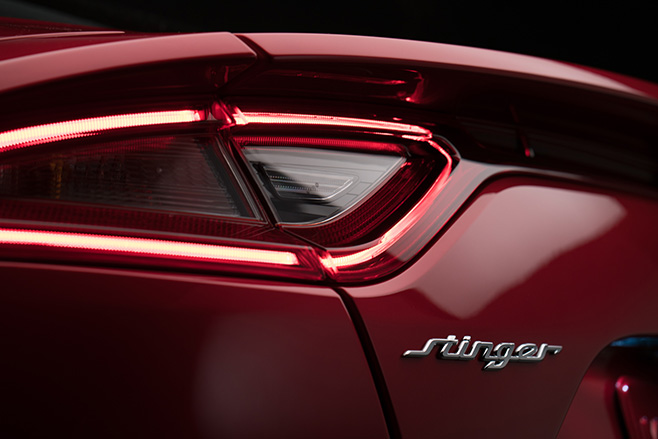
But while rival fans of both Holden and Ford would happily set each other on fire at Supercars’ races around the country, there was one thing they could always agree on: a white-hot hatred of outsiders. Had Kia attempted to launch the Stinger five years ago it would have been a very different story. It would have been chased off Mount Panorama by pitchfork-wielding Commodore and Falcon fans united by a common Korean enemy.
In 2017, though, the landscape looks a little different. Ford has shuttered its local factory, ending 88 years of local manufacturing and retiring the Falcon nameplate forever. Holden is months away from doing the same, confirming October 20 this year as its final day of Aussie production. The Commodore name will live on, but only as a badge glued onto imported product.
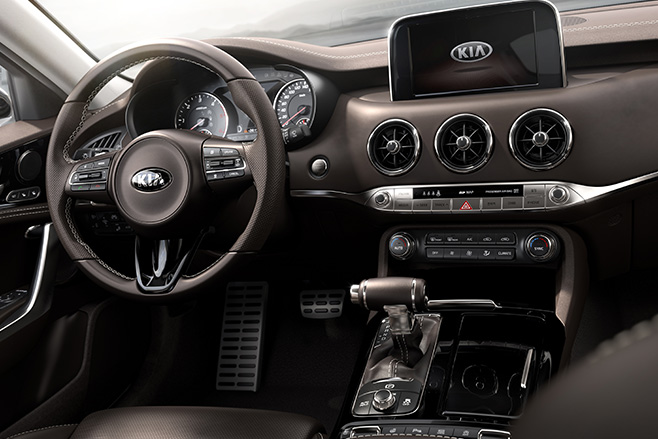
“This is a product with the power to surprise. We wanted to create a product that had a lot of emotion, and create a product that would really enhance the brand from where it currently is. It’s definitely different from anything we’ve done,” Kia Australia’s general manager of product planning, Roland Rivero, said. “This is definitely another level of performance.”
Born of a six-year gestation (it was first shown in concept form in 2011) Kia’s two-tier Stinger range is poised for an October debut in Australia, neatly parking in the space that will be vacated by Holden that same month. But the warm and fuzzy feelings mean nothing if the car is rubbish.
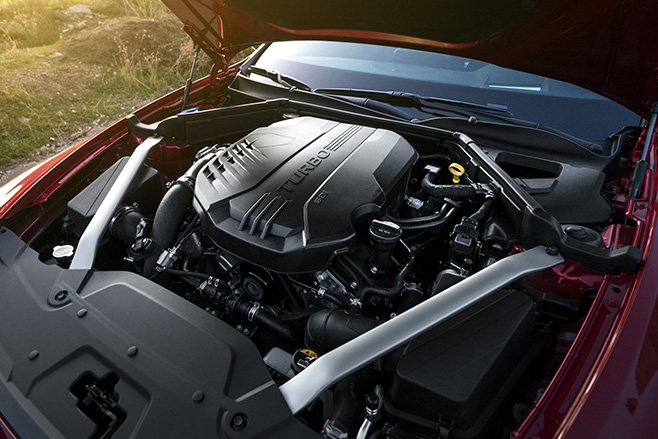
The Stinger will arrive in Australia sporting two engines, the entry-level option being a 2.0-litre turbocharged four cylinder that will produce 190kW at 6200rpm and 353Nm from 1400rpm. The second option, though, is the one causing all the fuss. A 3.3-litre twin-turbo V6 that will generate 272kW at 6000rpm and a meaty 510Nm from 1300rpm and will arrive in the Stinger GT model.
Expect a 0-100km/h time of 5.1secs and a circa-269km/h top speed. Both engines are matched to an in-house eight-speed automatic, complete with wheel-mounted paddles, and power is sent exclusively to the rear wheels in Oz-spec cars.
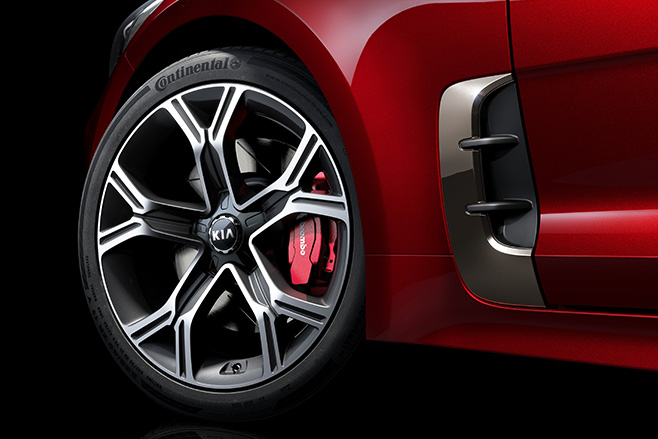
So far so good, then. Australia’s unique appetite for performance has forced the brand’s local HQ into some critical spec changes, too. All-paw cars won’t be coming here, and even the entry-level model will arrive with a mechanical limited-slip differential, along with a five-stage driving mode selector (Sport, Personal, Eco, Comfort and Smart) that will shift damper settings, accelerator mapping and steering weight.
The smaller capacity engine rides on 18-inch alloys, while the GT sits on 19s, with the latter also nabbing Brembo brakes front and rear. Both models get MacPherson struts up front, and a multi-link independent setup at the back.
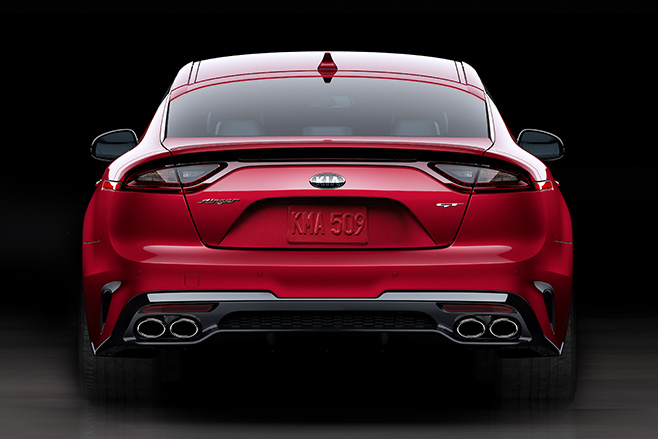
Finally, the electric power steering system was designed with steering feel and feedback in mind over all else.
All of which is delightfully anti-Kia. And on paper, the Stinger ticks a lot of boxes. But the biggest unknown is how Australia’s performance faithful will respond to a rear-drive sedan from a company not known for setting pulses racing. And let’s be fair, there’s a reason Holden and Ford are abandoning their two most well-known nameplates – and it’s not because they’re selling too many of them.
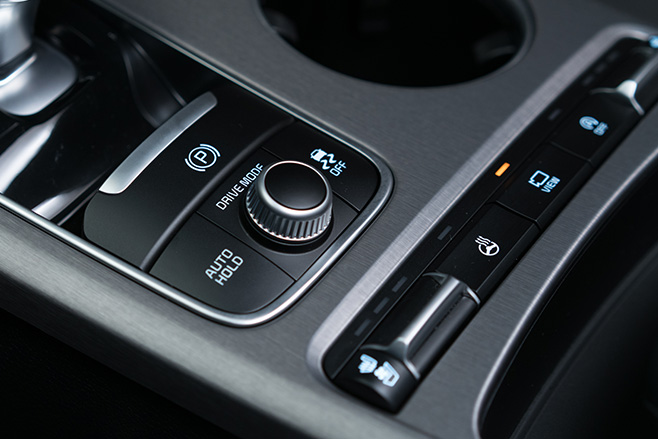
But Kia Australia is convinced there’s a market for what it calls “the traditional Aussie six”, and is even more certain its Stinger will be packing the arsenal to fight its way to the top of that segment.
“The wheelbase does straddle that of a Commodore or Falcon. We believe there’s still a market here in that large car segment, and while the formula might change from what Holden and Ford were offering, there’s still a market for the traditional Aussie six,” Rivero said.
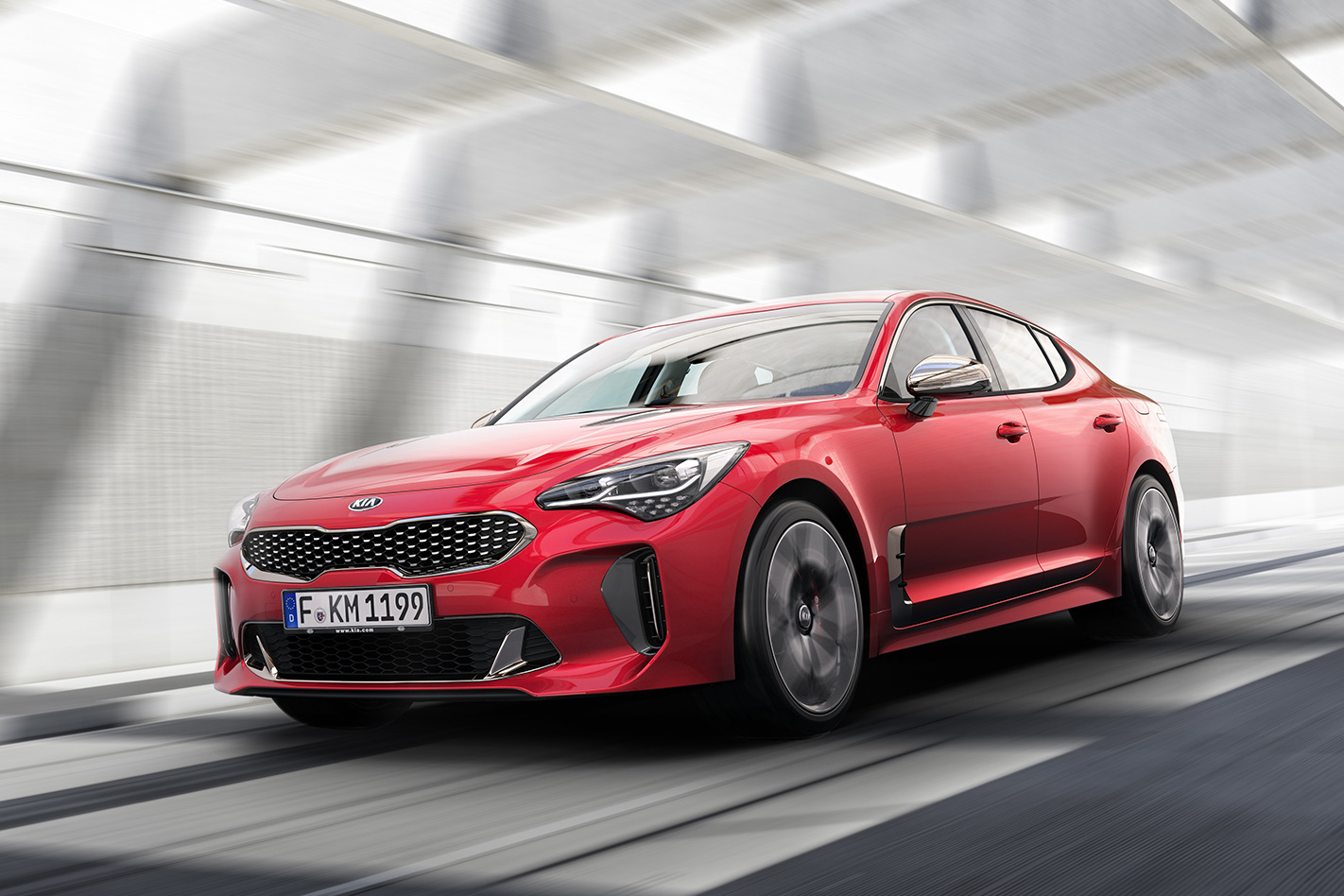
“We’ve got to make sure we get the product right, the trim levels right and the specification levels right,” he says. “Once you step up into this segment there’s an expectation of the kinds of things you should get in a vehicle. And we want to make sure that we deliver that and more.”
Our Stingers will be further fine-tuned by the Aussie HQ’s suspension consultant Graeme Gambold, who has done some stellar work on Kia’s range over the past few years, hammering out the fluffiness usually found in Korean or US-spec vehicles, adding both feel and feedback to the drive experience.
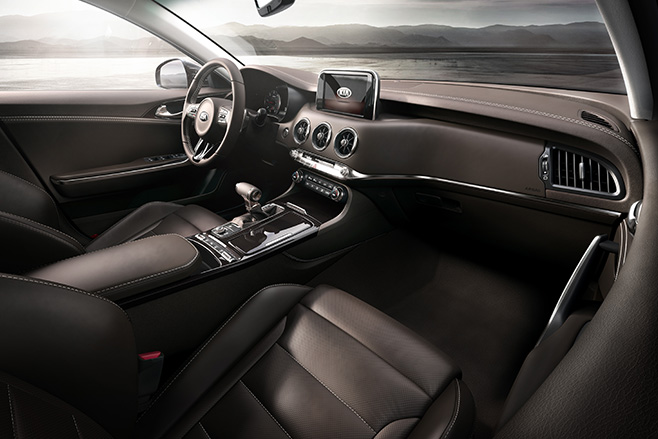
Captain of Kia’s crayons, Peter Schreyer (he is of Audi TT fame), is the man responsible for injecting a sense of premium fashion into Kia’s once dowdy design philosophy. The Stinger is his baby, from concept form all the way to production.
At 4831mm in length and on a 2906mm wheelbase, it’s about odds-on for both the Commodore (4919mm and 2915mm) and the Falcon (4949mm and 2838mm), and actually a longer wheelbase than key premium competition like the Audi A4, Lexus IS and BMW 4 Series Gran Coupe.
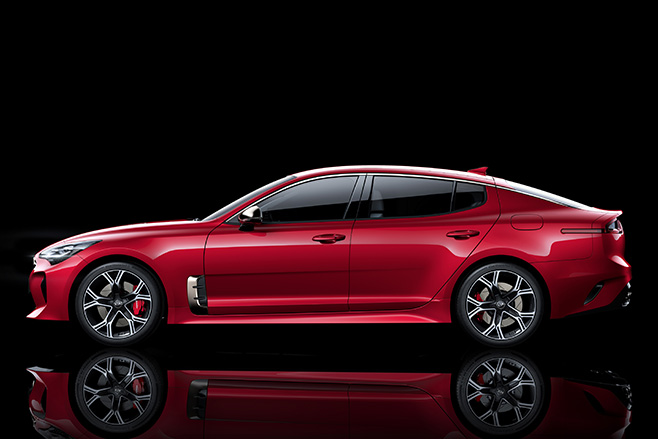
The bonnet is punctuated by two high-mounted (and purely ornamental) vents, while the fastback roofline gently drops away as it meets a muscular shoulder line above the rear wheels. Four exhaust tips complete the picture, housed below the fastback-style boot.
So, will it live up to the hype? Only time will tell. But in the words of one senior Kia executive: “The Kia you knew five or even 10 years ago is gone.” That much is indisputable. But what exactly will replace it? We’ll find out later this year.

